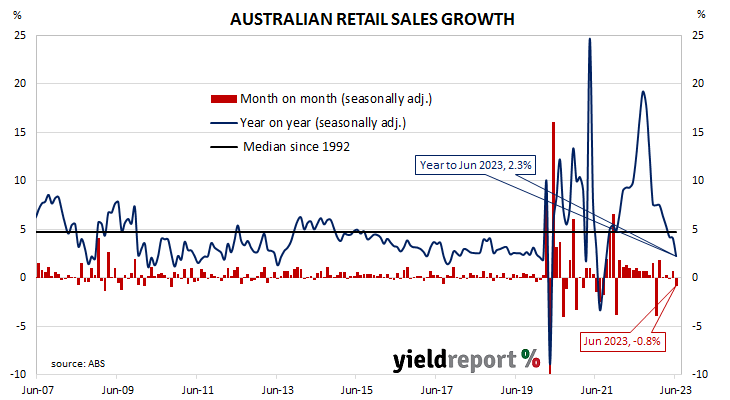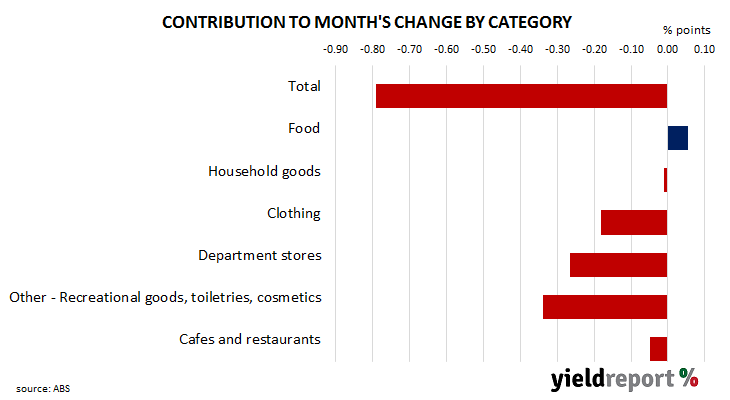Summary: Retail sales down 0.8% in June, lower than expected; Westpac: flat underlying trend implies declines in inflation-adjusted terms; ANZ: soft print points towards 0.5% fall in Q2 retail volumes; largest influence on result again from “other” (recreational goods, toiletries, cosmetics) sales.
Growth figures of domestic retail sales spent most of the 2010s at levels below the post-1992 average. While economic conditions had been generally favourable, wage growth and inflation rates were low. Expenditures on goods then jumped in the early stages of 2020 as government restrictions severely altered households’ spending habits. Households mostly reverted to their usual patterns as restrictions eased in the latter part of 2020 and throughout 2021.
According to the latest ABS figures, total retail sales decreased by 0.8% on a seasonally adjusted basis. The fall was lower than the generally-expected flat result and in contrast with May’s 0.8% increase after it was revised up from 0.7%. Sales increased by 2.3% on an annual basis, down from May’s revised figure of 4.1%.
“Retail sales unwound all of May’s surprise gain, pointing to a flat underlying trend implying declines in real inflation-adjusted terms,” said Westpac senior economist Matthew Hassan.
Commonwealth Government bond yields moved significantly higher on the day, largely following strong rises in US Treasury yields overnight. By the close of business, the 3-year ACGB yield had gained 8bps to 3.88%, the 10-year yield had jumped 15bps to 4.07% while the 20-year yield finished 12bps higher at 4.36%.
In the cash futures market, expectations regarding further rate rises softened. At the end of the day, contracts implied the cash rate would rise from the current rate of 4.07% to average 4.12% in August and then to 4.16% in September. February 2024 and May 2024 contracts both implied a 4.295% average cash rate, 23bps more than the current rate.
“The soft print points towards a 0.5% fall in Q2 retail volumes,” said ANZ economist Madeline Dunk. “This would mark the third consecutive decline in retail volumes, a result only seen during the GFC and not, for example, in the early 1990s recession…Spending is slowing as household budgets are squeezed by rising mortgage payments and cost of living pressures.”
Retail sales are typically segmented into six categories (see below), with the “Food” segment accounting for 40% of total sales. However, the largest influences on the month’s total again came from the “Other” segment where sales fell by 2.2% on average over the month.



